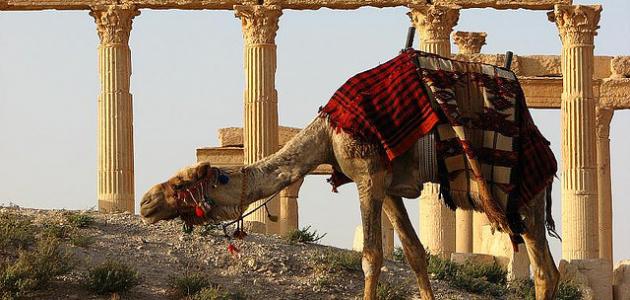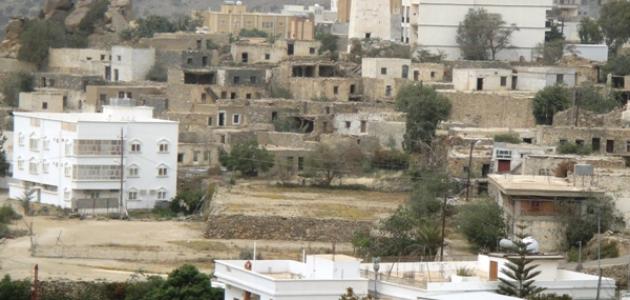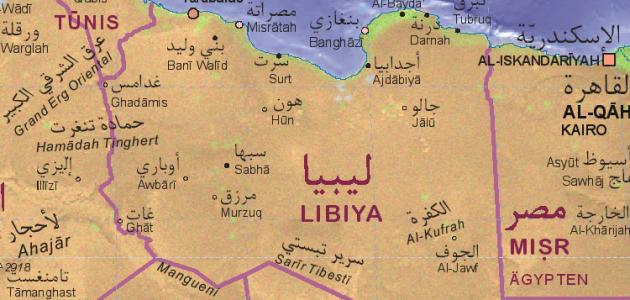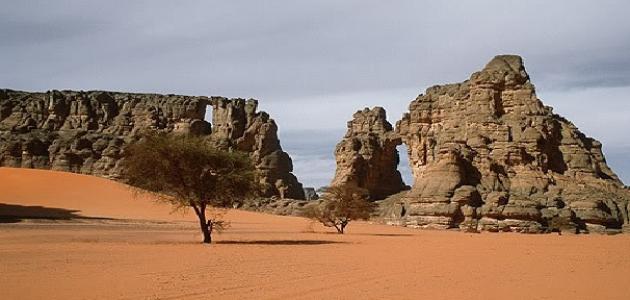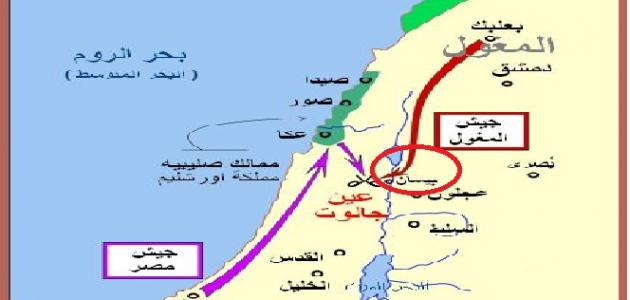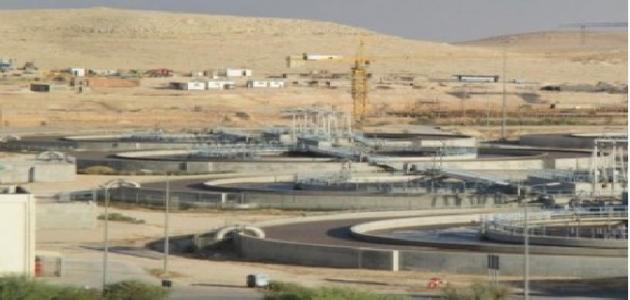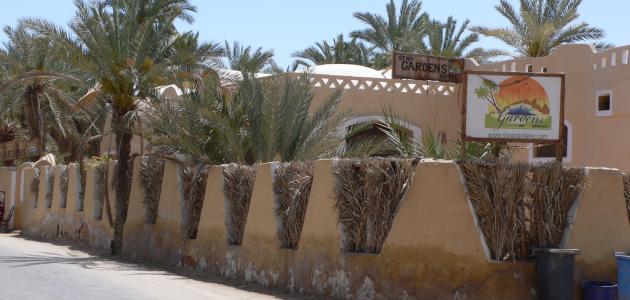Destroy
Palmyra is an ancient Syrian city. It was an oasis in ancient times. It is a meeting place for commercial caravans. It attracted people from diverse cultures and countries. They would stop there while traveling between Persia in the east and Rome in the west. The Romans took control of the city in the first century AD, and were able to protect it from the domination of their Persian rivals. The city was ruled in the middle of the third century by a queen named Zenobia. She tried to expand her kingdom and seize Egypt and Asia Minor - Turkey - but she was defeated and fell into the hands of the Romans, who destroyed Her city. This city was later rebuilt, but it lost its historical importance. Due to the change in the routes of commercial caravans that no longer pass through them.
Palmyra site
The city of Palmyra is located approximately in the middle of the state of Syria, at a distance of approximately 210 km northeast of the Syrian capital, Damascus. Palmyra is positioned approximately halfway between the Mediterranean Sea to the west and the Euphrates River to the east. Therefore, it was an important center for trade routes between the East and the West in various historical eras, as it was. It has an important role of great importance in linking the Roman Empire and Mesopotamia.
The city of Palmyra is located 150 km east of Homs, in the middle of the Levant Desert, which is an arid desert in eastern Syria. The city is located in a mountain pass at the foot of Mount Al-Mandar, between the Palmyra mountain range, and it is close to a spring rich in water, which has made it a green oasis since ancient times. In ancient times, caravans arriving from various neighboring countries stopped there, such as: the Arabian Gulf, Persia, and the countries of the Mediterranean Basin.
Read also:Where is Baalbek located?History of Palmyra
Palmyra is considered one of the important archaeological cities in the region. It was mentioned by its current name in history books for the first time, approximately two thousand years before the birth of Christ. The source of this name is not specifically known, but it may be derived from Palmyra. Meaning fever in ancient Arabic dialects, but in Latin and Greek languages it was known as palmyra. It literally means the city of palm trees, and was given to the city by the Roman rulers in the first century AD.
A large freshwater lake occurred in ancient times in the navigation depression located east of Palmyra. Ancient man benefited from the waters of this lake and from hunting animals that roamed around it and then took refuge in the mountains afterwards. Stone tools dating back tens of thousands of years were found there, and archaeological research revealed pottery pieces dating back to the Bronze Age, about two thousand years BC. The city was referred to in ancient texts and manuscripts found in the cities of Mari and Imar, located on the Euphrates, as well as In Assyrian manuscripts dating back more than a thousand years BC.
It is believed that the city was destroyed during the time of the New Babylonian state or the Persian Achaemenid state. About five hundred years BC, but it regained its glory and gained its importance in the Seleucid era, when it became an independent city, like the Nabatean state to the south, and the Emirate of Homs to the west. In the first century AD, the Roman Empire seized Palmyra, then Emperor Hadrian granted it the privileges of a free city. So that its rulers were able to enact laws and legislation as they saw fit, but it lost its commercial importance when the Persian state took control of Mesopotamia in 228 AD, and it remained that way until some of its rulers succeeded in repelling the Persians and defending it.
Read also:Where is Rawdat Sudair located?During the third century, Queen Zenobia - the most famous ruler of Palmyra in history - took over the rule of Palmyra, and succeeded in raising the city’s value, wealth, and prestige during difficult times, when the Roman Empire was going through severe political chaos, and the area of the Kingdom of Palmyra expanded in a sudden and very large way during the reign of Zenobia. It expanded to control the Levant, Palestine, and Egypt after seizing all of these states from the Romans, and thus the Palmyra Empire was born. However, Zenobia lost the war in the end, and fell into the grip of the Roman Emperor Aurelian, who ordered the plundering and destruction of the city of Palmyra. To quell her revolution. Palmyra was later rebuilt, but it never regained its former importance and economic wealth.
Palmyra ruins
The city of Palmyra is still rich in historical monuments. It contains the ruins of an ancient city, which was a major cultural center in the past, and between the first and second centuries AD, Palmyra was characterized by unique architecture. It combines the architecture of the different civilizations that lived around this city. Elements of Roman and Greek architecture emerged, mixed with local culture, and influenced by Persian art. In the seventeenth and eighteenth centuries, European travelers were greatly influenced by the unique architecture of Palmyra. They transferred it to the West, and this played a fundamental role in reviving historical architectural design patterns in Western countries.
A large colonnaded street of great historical importance passes through the center of the city. On both sides of it are covered walkways, and small streets with similar designs branch off from it. One of the ancient buildings in the city, called the Temple of Baal, is considered one of the most important religious temples built in the first century in the countries of the East. In southern Palmyra, there is the theatre, the headquarters of the Senate, and the public square where the people of the city used to meet.
Read also:Where is the Caucasus located?Palmyra culture
The city of Palmyra was financially and economically prosperous. Because of its important geographical location, the Palmyrene people were famous for their professional trade between the Kingdom of Palmyra and other countries located east and west. The people of Palmyra worshiped many gods. In the pantheon of gods alone there were approximately sixty gods, such as: the god Bel of Palmyra, and his son Nebo, and Yahrabul, the god of the sun, and Ajlbul, the god of the moon, and the Roman god Jupiter, and the Canaanite god Baalshamin, who is the god of the heavens. They also worshiped Arab gods, such as: Al-Lat, Al-Uzza, He grew up and was satisfied. The people of Palmyra were among those who cared greatly about their religion and their gods, and so they built many temples. In recognition of it, it includes the temples of Bel, Nabu, Baal-Shamin, and Al-Lat.
